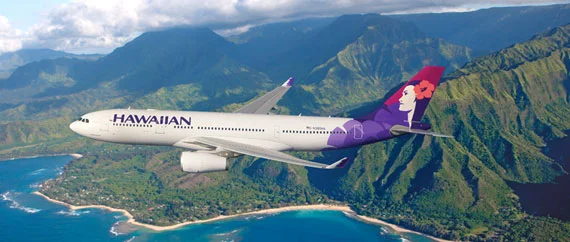Here is the feature article, written in the persona of Dr. Aris Thorne.
*
It’s easy to see the news and feel a sense of loss. On October 29th, a Hawaiian Airlines flight, HA 866, will push back from the gate for the last time. After that, the “HA” callsign, a two-letter identifier that has been a part of the aviation lexicon for nearly a century, will vanish into the digital ether. It’s being replaced by “AS,” the signifier for Alaska Airlines, the company that is finalizing its $1.9 billion acquisition of the iconic island carrier.
For many, this is the final, procedural nail in the coffin of an independent brand. It’s the end of an era, a story of a beloved local institution being swallowed by a larger competitor. I get it. Nostalgia is a powerful force. But I’m here to tell you that’s the wrong way to look at this. When I first saw the announcement, I honestly just sat back in my chair, not with sadness, but with a profound sense of awe. Because what we’re witnessing isn’t a death. It's a metamorphosis. We’re watching the birth of a new kind of network, and the retirement of a callsign is merely the sound of the engine turning over.
The Ghost in the Airline
Let’s talk about what a callsign really is. To us, it’s just letters on a boarding pass. But inside the global aviation system, it’s a fundamental piece of an airline’s digital soul. It’s the root command for everything: for booking, for air traffic control, for maintenance logs, for baggage handling, for the accrual of your Hawaiian Airlines miles. Merging two airlines isn’t like merging two offices; you can’t just change the logo on the door. It’s like trying to merge two distinct biological organisms.
You have to fuse two completely different digital nervous systems—reservation platforms, crew scheduling software, loyalty programs—that have evolved independently for decades. This is a monumental task of software engineering and data science. The process involves something called a single operating certificate—in simpler terms, it’s the airline’s official, government-sanctioned identity, its digital and regulatory DNA. Creating a new one from two old ones is one of the most complex challenges in the modern economy.
This integration is a high-wire act of digital alchemy. It’s like trying to make an iPhone run Android apps natively, seamlessly, without the user ever noticing the frantic code-switching happening behind the screen. You’re taking the deep, culturally ingrained "aloha spirit" of Hawaiian Airlines and attempting to map it onto the operational DNA of Alaska, a carrier known for its West Coast efficiency and robust tech. The disappearance of the "HA" code by April 2026 isn't an erasure; it's the final keystroke in a command that reboots the entire system as something new.

So, is this just a bigger version of United or American Airlines? I don’t think so. This feels different. This is a story about connection, not just consolidation. It’s about bridging the Pacific not just with routes, but with data.
Writing the Code for Tomorrow
And here’s how I know this is about building the future, not just archiving the past: they’re hiring. In a recent call to Dream big, fly far: Apply now for a summer 2026 internship at Alaska, Hawaiian and Horizon, the newly forming entity announced it’s looking for over 60 interns for the summer of 2026. They’re looking for new minds to join them in Honolulu, Seattle, Anchorage, and beyond.
This is the detail everyone is missing. You don’t bring in a massive class of bright-eyed young people to simply oversee the dismantling of a legacy. You bring them in to build what comes next. Imagine being a 20-year-old computer science student given a chance to work on the project of unifying two massive loyalty databases, a challenge that directly impacts millions of travelers and decades of data—it's the kind of complex, real-world problem that can define an entire career and fundamentally change how we think about networks. This isn't just about getting from Maui to Seattle; it's about the invisible architecture that makes that journey possible.
This reminds me of the moment the final spike was driven to complete the First Transcontinental Railroad. On the surface, it was just the joining of two sets of tracks, the Central Pacific and the Union Pacific. But its real significance wasn't the physical connection; it was the creation of a new, unified network that compressed time and space, fueling a century of innovation and migration. This merger is a digital version of that moment. We’re not just connecting airports; we’re connecting ecosystems.
Of course, with this power comes immense responsibility. The new Alaska Air Group has a duty to be a steward of the Hawaiian culture it has inherited, not just an exploiter of its routes. Can you scale the feeling of "aloha"? Can you write code that preserves a sense of place and identity? These are the profound questions those young interns will have to help answer. What happens to the unique bond the airline has with the islands of Hawaii when its decisions are made thousands of miles away?
More Than Just a Flight Number
In the end, this isn’t really a story about an airline. It's a story about systems. The retirement of the "HA" callsign feels emotional because we anchor identity to symbols. But the true identity of a network lies in its function—its ability to connect people, to create opportunity, to make the world feel a little smaller and more accessible.
The callsign is changing, but the call to connect is only getting stronger. The challenge now is to build a new entity that honors the nearly 100-year legacy of Hawaiian Airlines while leveraging the technological power of Alaska to create something better, smarter, and more human. That’s a future I’m genuinely excited to see take flight.
